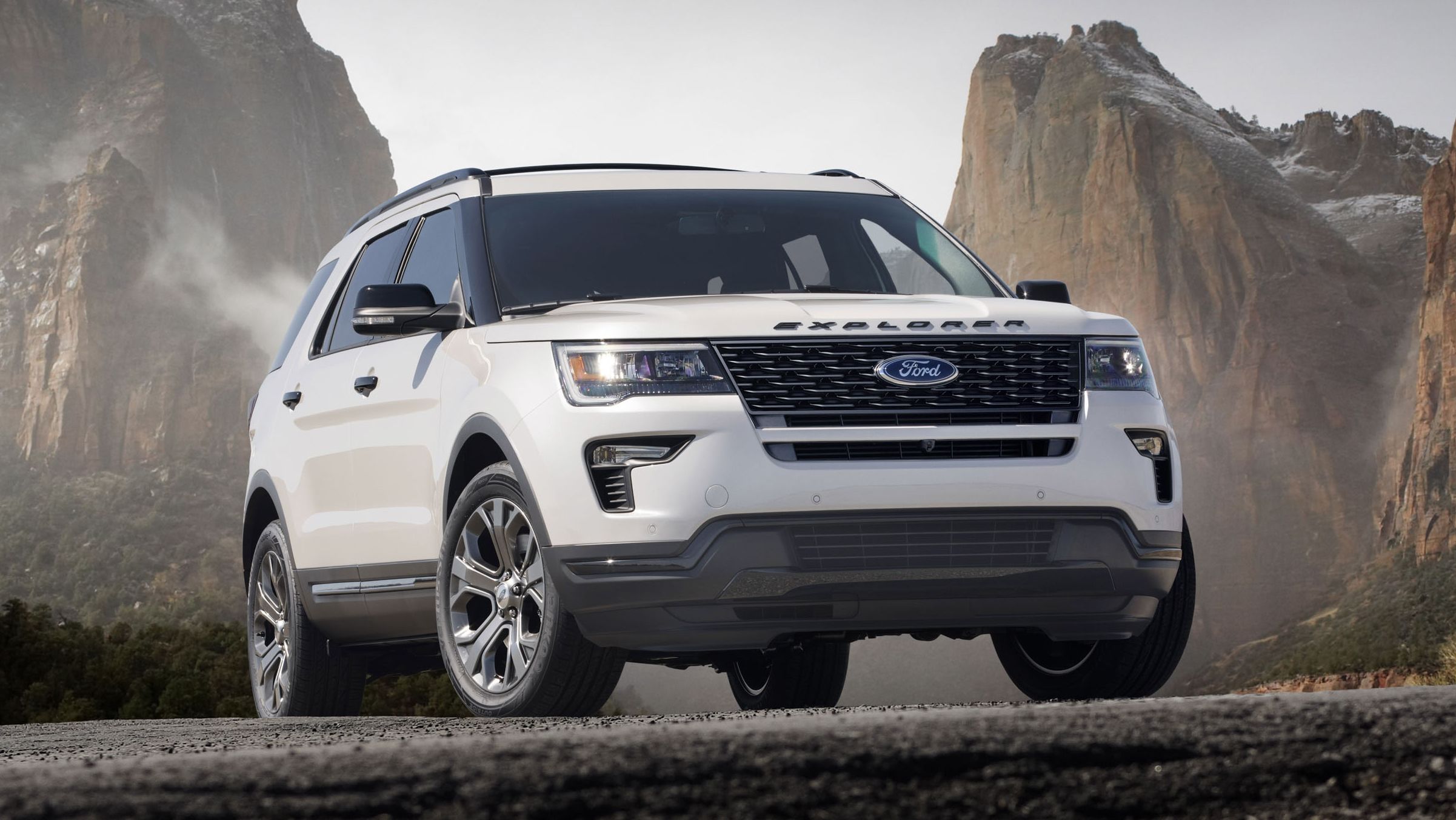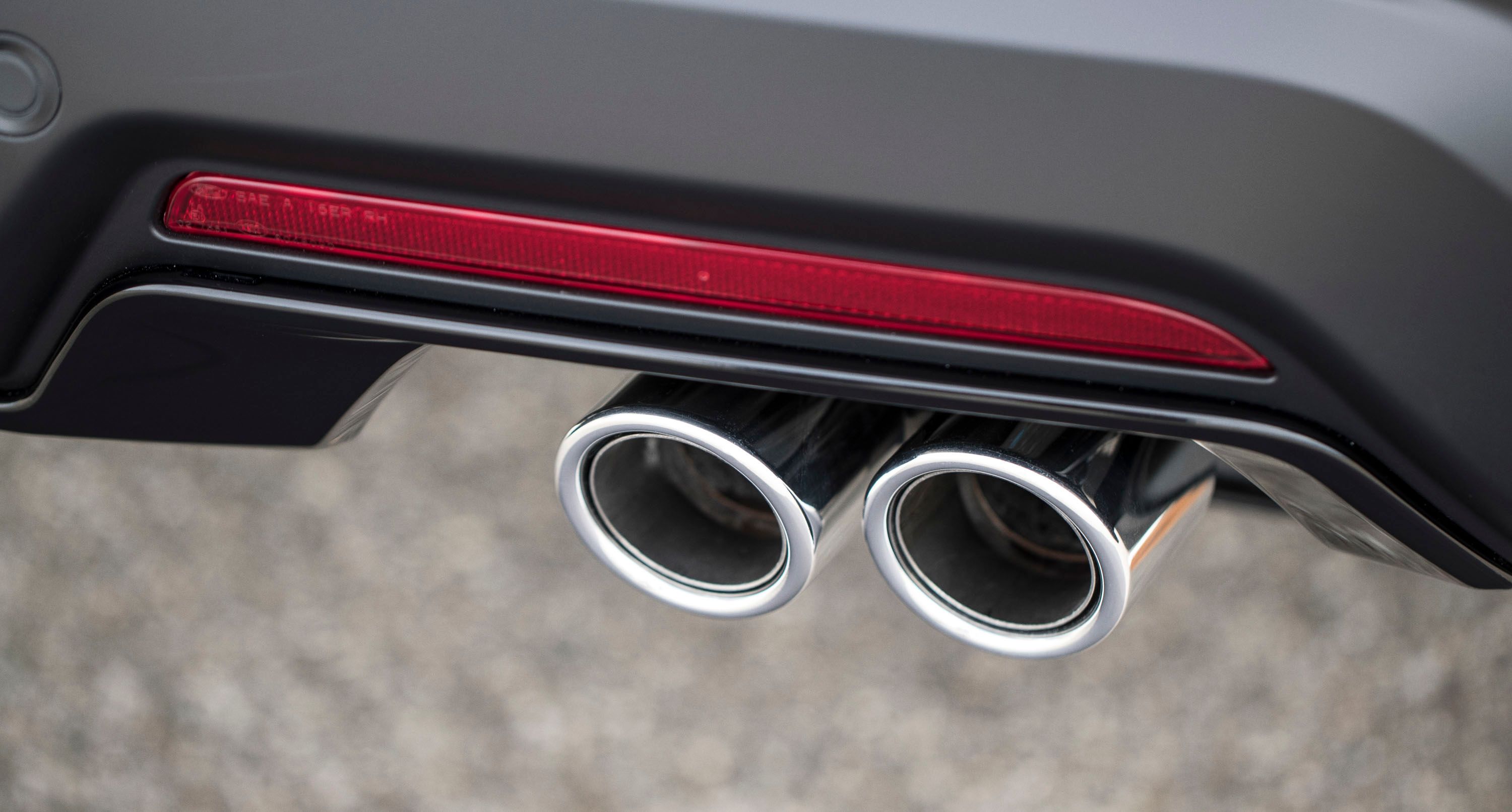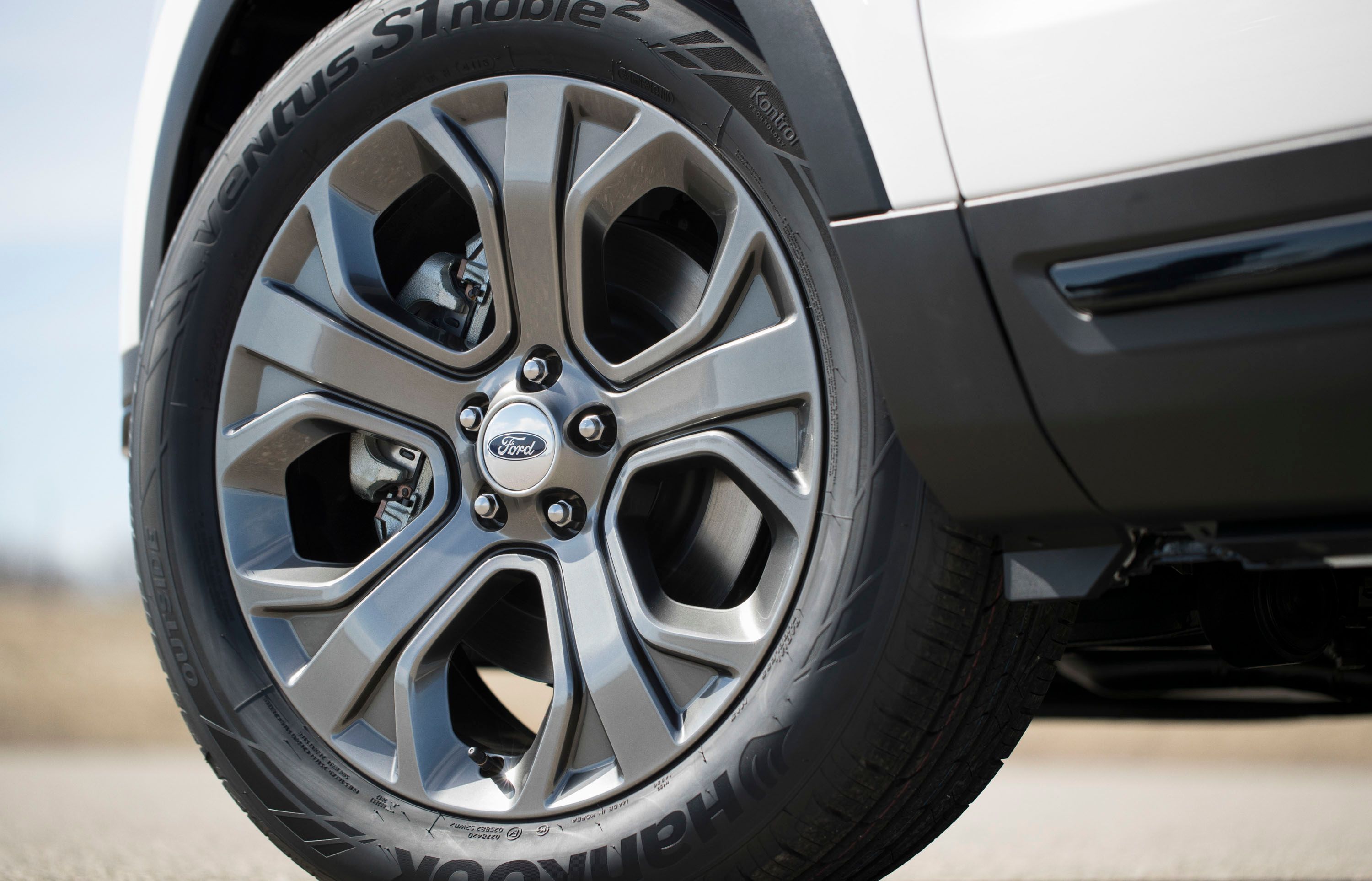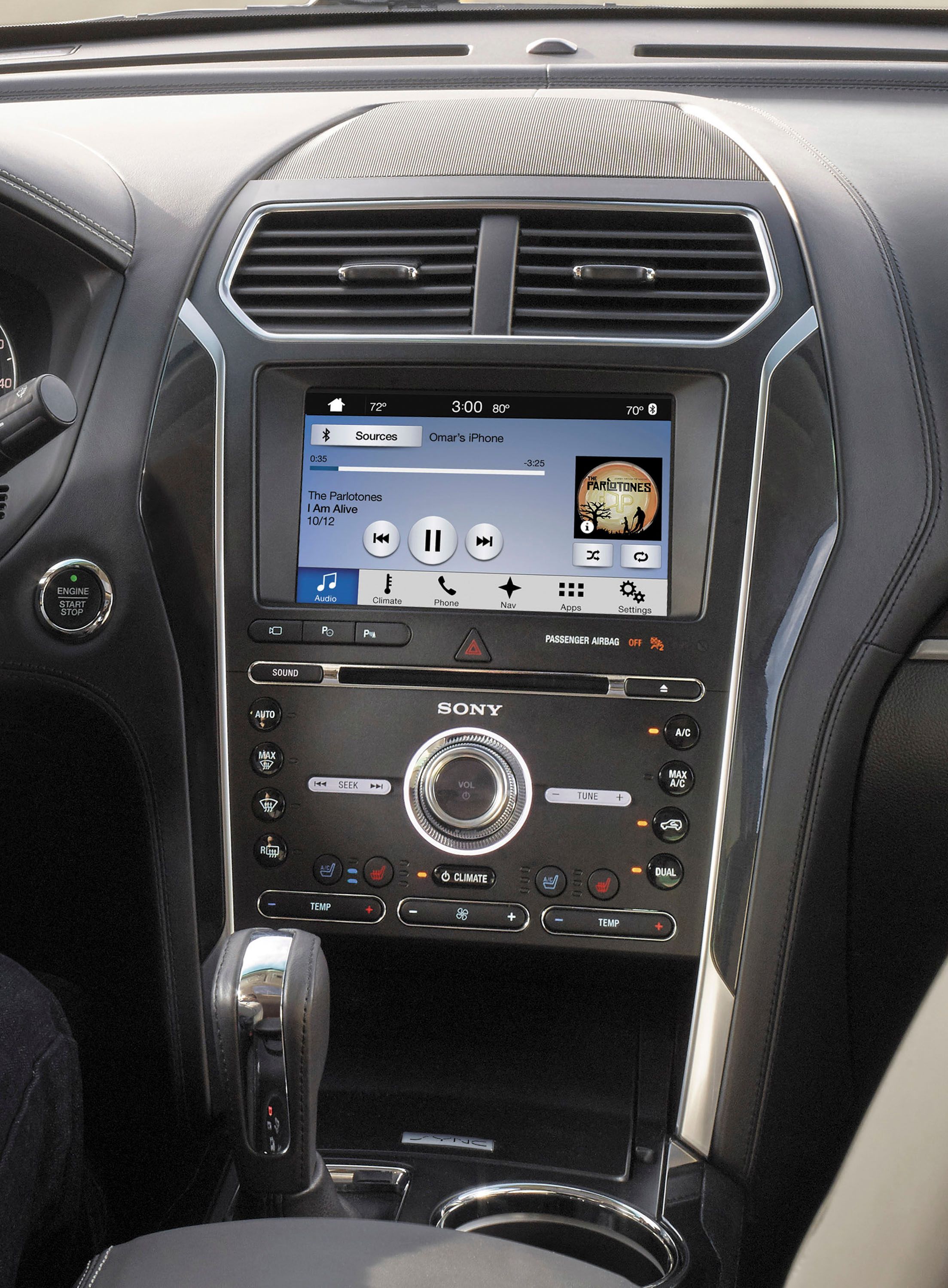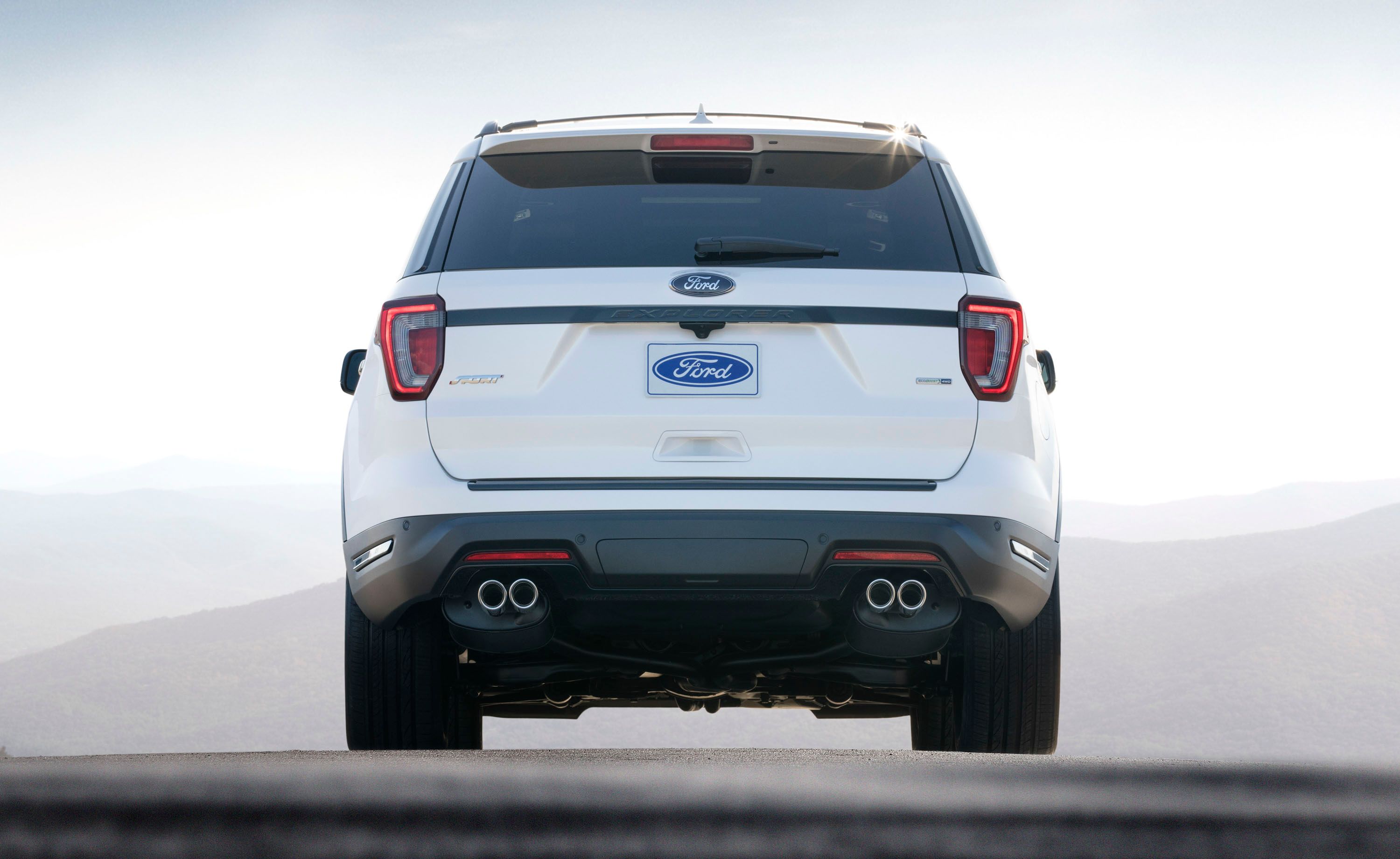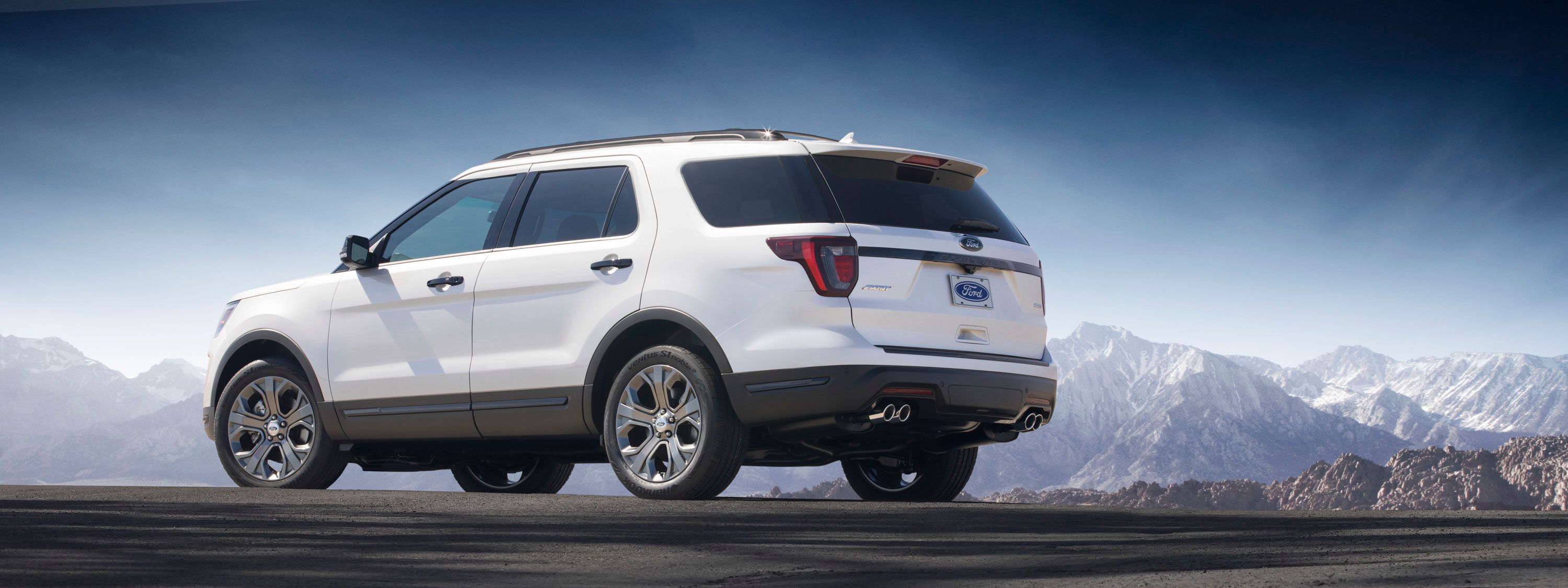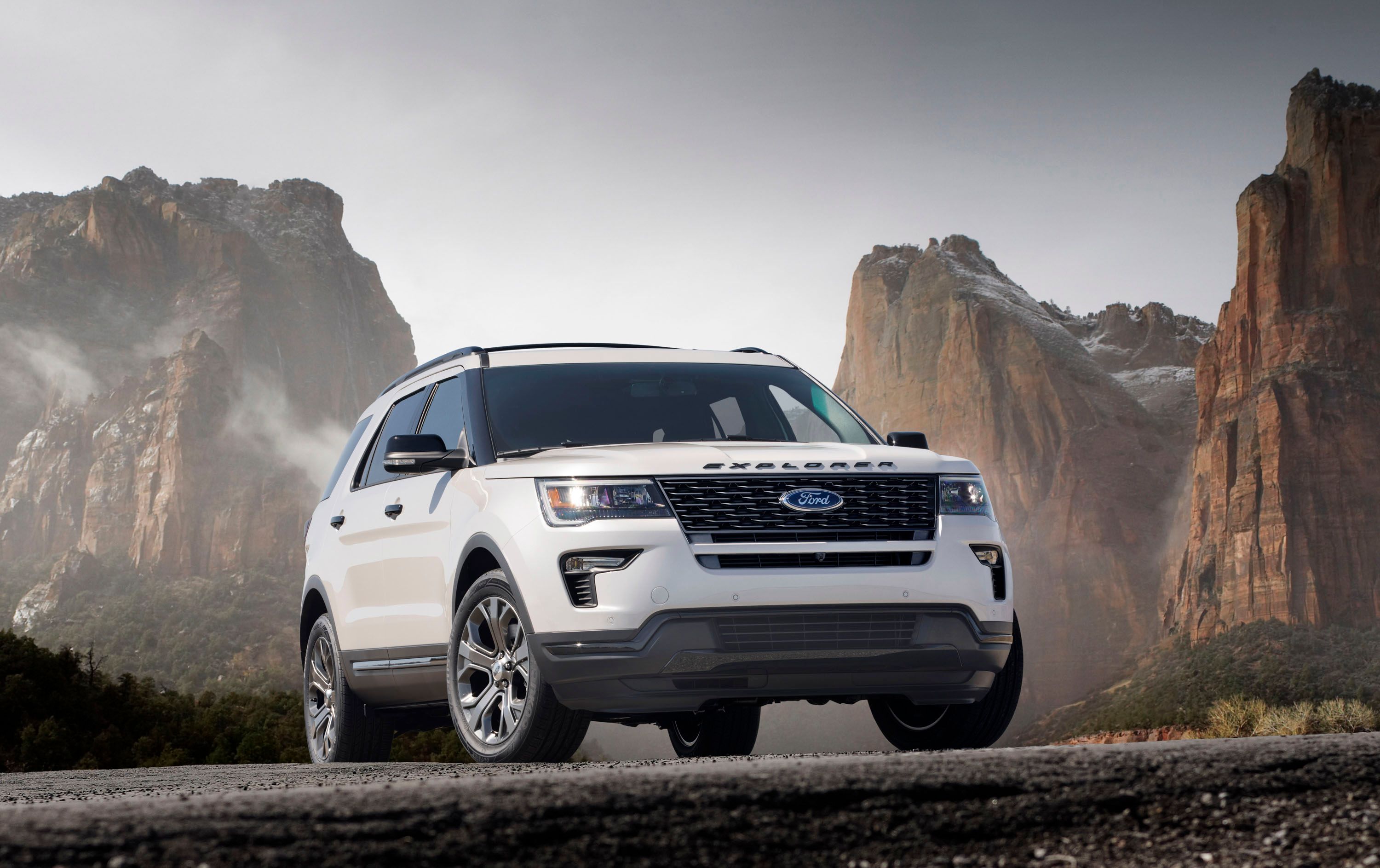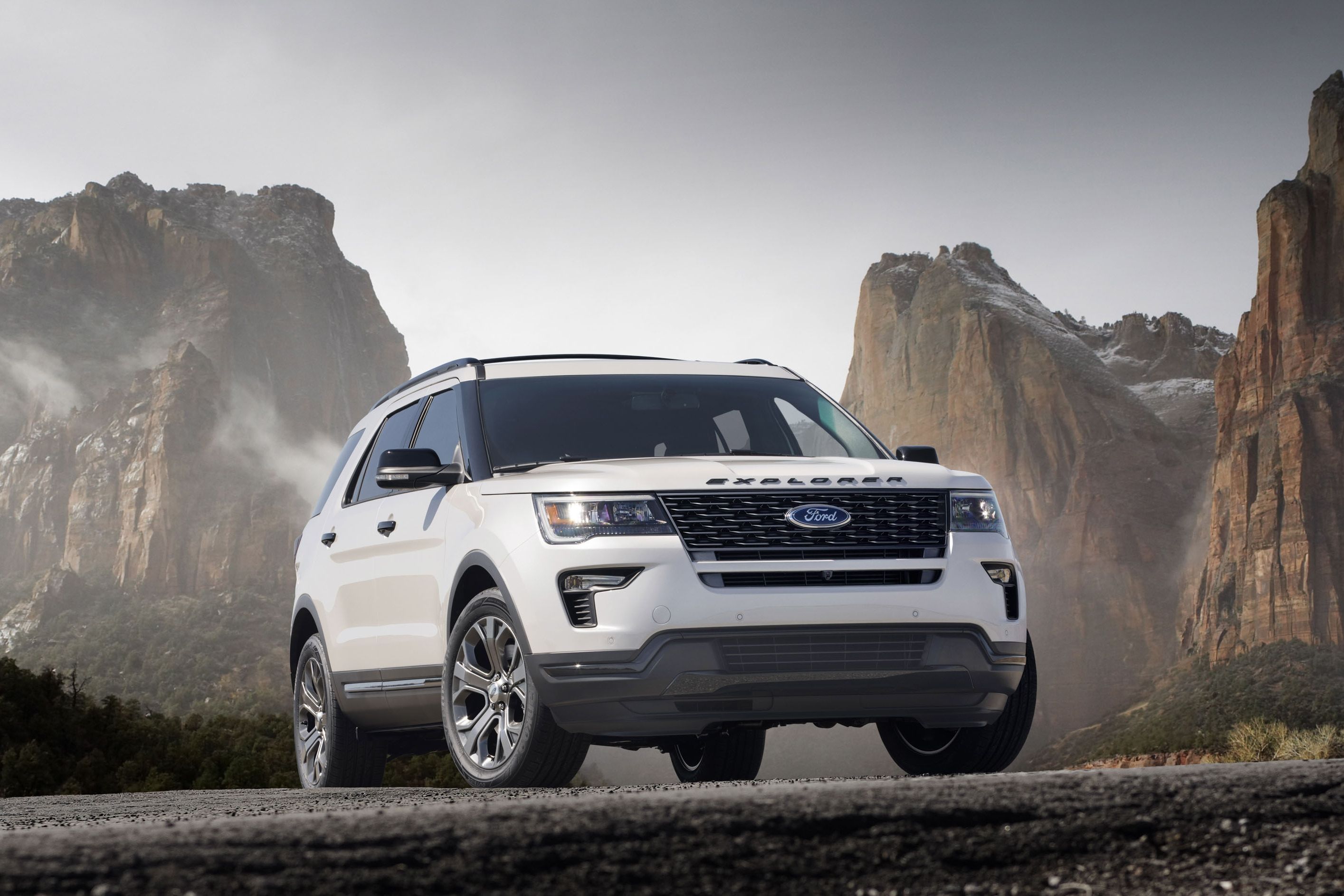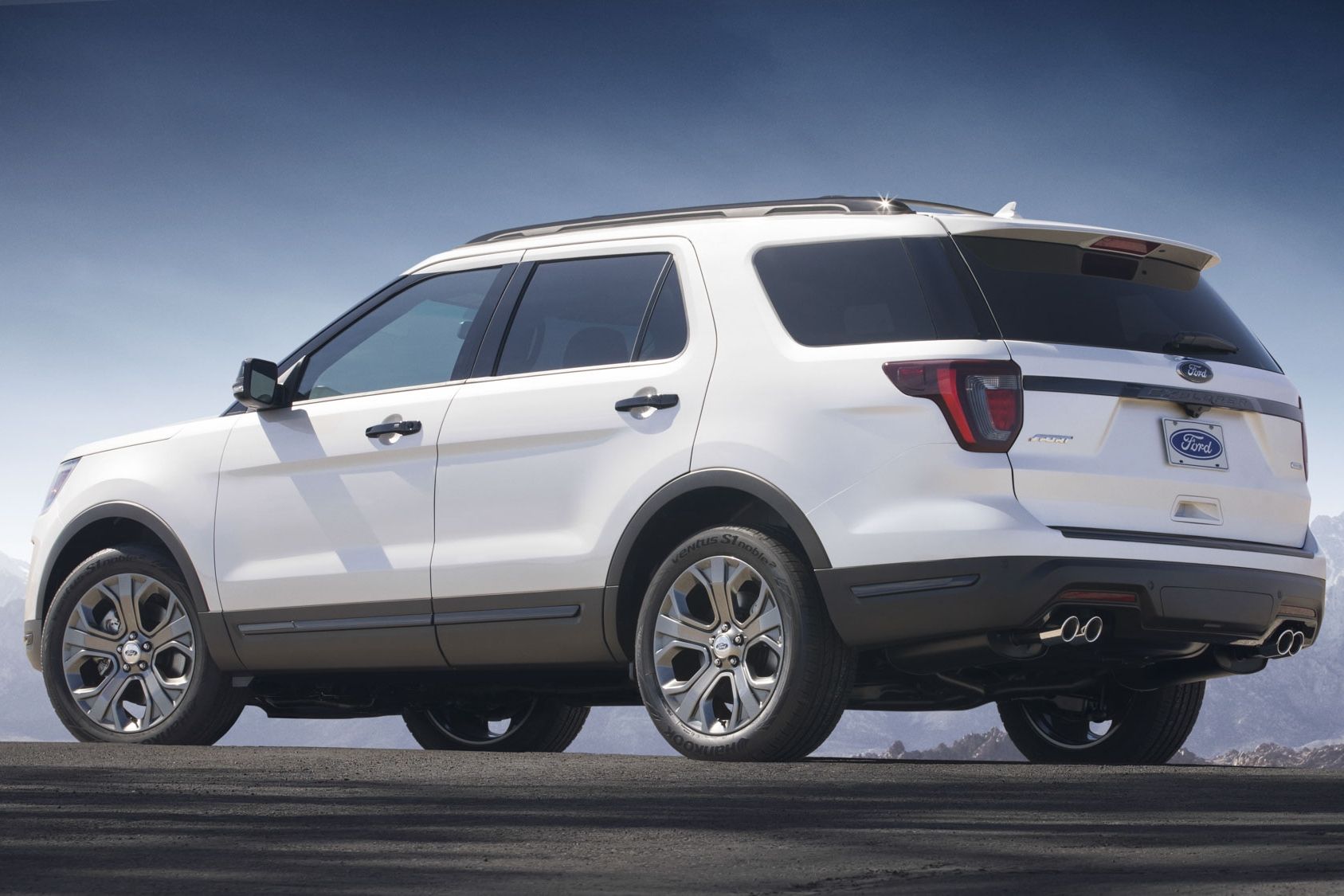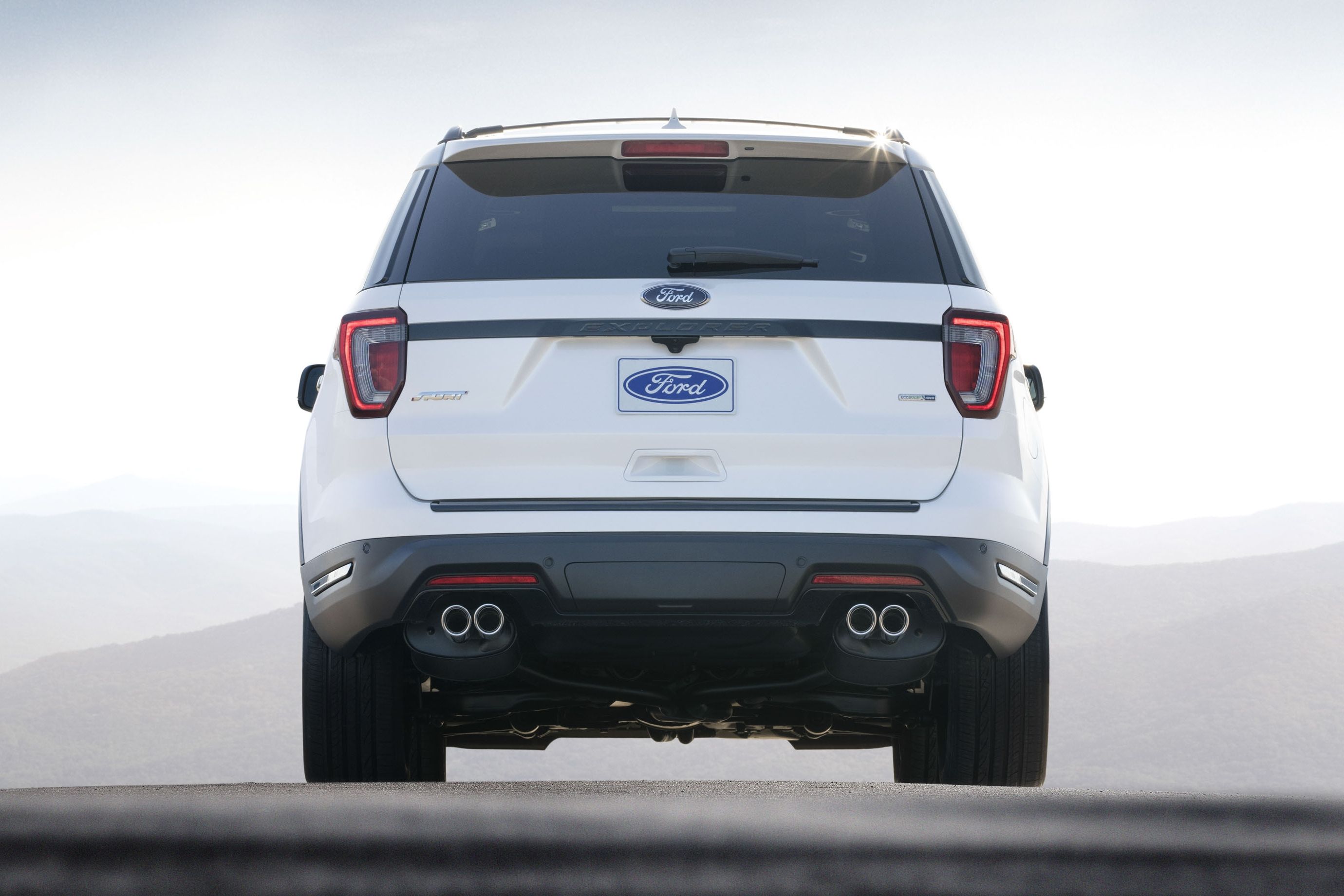The Ford Explorer has defined the American SUV segment for more than two decades, having debuted for the 1991 model year. Changes both big and small have kept the Explorer, well, exploring urban and rural landscapes across the U.S. with big sales figures sliding across Ford’s bean counters’ desks. But of all those updates, Ford’s latest might be the smallest. Insignificant? Not really, but you’d have to be a fanboy to spot the differences.
Headlining the changes for the 2018 model year is a slightly reworked exterior, new active safety equipment packages, and more choices with four new colors and five new wheel designs. These changes made their debut at the 2017 New York Auto Show.
These modifications to the Explorer come in response to market research Ford says indicates the crossover and SUV segments will be the fastest-growing of all segments over the next few years, soon accounting for more than 45 percent of all non-luxury vehicles sold in the U.S. While that’s not surprising, Ford says millennials and baby boomers are leading the way. Of course, Ford says it will be ready to meet this growth thanks to its new lineup of crossovers and SUVs. These include the EcoSport, Escape, Edge, Explorer, and Expedition.
The revised 2018 Explorer is expected to hit showrooms this fall, with pricing staying mostly stagnate with current 2017 Explorer pricing. Keep reading for the full run-down of the changes for 2018.
Continue reading for more information.
2018 Ford Explorer Sport
- Make: Array
- Model: 2018 Ford Explorer Sport
- [do not use] Vehicle Model: Array
Exterior
Slight changes define the 2018 update. Up front is a new grille insert, with redesigned and smaller fog light housings. The lower grill swaps an X pattern for a grid, but still serves the same function of airflow for cooling. Along the sides, the lower character line now continues behind the rear wheel, giving he Explorer a longer look though its dimensions haven’t changed. Around back, the lower fascia is new, with the range-topping 3.5-liter EcoBoost V-6 getting chrome-tipped quad exhaust pipes. It’s doubtful the pipes are necessary for performance, but the look does exude a more sporty stance over the twin pipes from 2017.
Four new color choices make their way onto the Explorer for 2018 and include Burgundy Velvet Tinted Clearcoat, Cinnamon Glaze, Platinum Dune Tricoat, and Blue Metallic. There are five new wheel designs, too.
Interior
There are plenty of competitors in the three-row mid-size SUV segment, but Volkswagen has out attention with the all-new Atlas. This seven-seater rides on VW’s flexible architecture that underpins several other models, while offering 5,000 pounds of towing, class-leading cargo room, and a surprisingly nimble driving experience in the Atlas.
As for looks, the 2018 Atlas shares Volkswagen’s angular and crisp design language, looking almost spartan compared to the more flamboyant contenders in this class. Big arches rise up well above the wheel wells, while plastic cladding along the lower sections for that SUV-ish look. Strong character lines along the side, a chrome grille that’s integrated into the LED headlights, and flush-mounted dual exhaust pipes bring some life to the design. 18-inch wheels come standard on lower trim levels and 20-inch rollers come on the premium models.
|
Volkswagen Atlas |
|
|
Headroom front/middle/rear (Inches) |
117.3 |
|
Shoulder room front/middle/rear (Inches) |
198.3 |
|
Hiproom front/middle/rear (Inches) |
78.3 |
|
Legroom front/middle/rear (Inches) |
70.0 |
|
Volume behind 1st/2nd/3rd row (cu ft) |
67.2/67.8 |
Drivetrain
Nothing changes inside cosmetically, though Ford has updated the in-dash technology for 2018. The Explorer now can be optioned with a 4G LTE modem with a Wi-Fi hotspot that supports up to 10 devices at once. What’s more, the Wi-Fi has a range of 50 feet around the SUV, making it possible to access the internet from a job site, or to simply take the kiddos “glamping.”
In addition, the Explorer’s SYNC system is updated with SYNC Connect, which allows owners to remotely access their Explorer using FordPass to start, lock, unlock, and locate their car from anywhere in the world. (Teenagers sure don’t have the privacy they once did…) And like other automakers’ remote access apps, FordPass offers remote vehicle diagnostics information.
Beyond that, the Explorer continues to offer seating for six or seven, depending on whether the second row is configured with the standard bench seat or optional captain’s chairs. Both the second and third rows fold neatly into the floor, creating a flat load surface capable of swallowing 80.7 cubic feet of cargo. With both rows in place, there is still 21 cubic feet behind the third row.
Of course, niceties like heated and cool leather seats, navigation, SiriusXM radio, a panoramic moonroof, Bluetooth connectivity, power-adjustable pedal and steering column, a power memory driver’s seat, and a partially digital gauge cluster are available.
Competing Drivetrains
There’s no denying the Atlas is a Volkswagen product when sitting inside. The interior carries VW’s minimalistic design theme seen throughout its lineup. The Atlas’ best reminds us of the Passat, and that’s a good thing. The dashboard has a thin, horizontal design with well-integrated chrome and wood trim pieces add a touch welcomed of character. Cloth seats come standard on the S trim, faux leather comes on the SE trim, and real leather comes on the SLE Premium. The SLE Premium also gets VW’s new digital gauge cluster, called the Virtual Display, and very similar to Audi’s Virtual Cockpit. Apple CarPlay and Android Auto come standard across the board, whether it’s on the S trim’s 6.5-inch infotainment screen or the SLE Premium’s 8.0-inch screen.
Other luxurious features include heated and cooled front seats, heated second-row seats, a 12-speaker Fender audio system, and a slew of USB and 12-volt power ports. Regardless of trim, every Atlas can carry 153 cubic feet of cargo volume. That’s just shy of the Explorer’s 155 cubic feet, but isn’t a deal-breaker. Customers can also order second-row captain’s chairs in place of the 60/40-split bench seat that comes standard.
|
Volkswagen Atlas |
||
|
Volkswagen Atlas 2.0T |
Volkswagen Atlas V6 |
41.3/40.4/38.3 |
|
Engine |
61.5/60.8/54.9 |
|
|
Horsepower |
58.2/58.0/45.1 |
|
|
Torque |
41.5/37.6/33.7 |
|
|
Read our full review on the 2018 Chevrolet Traverse here. |
61.0/3.5/39.2 |
Conclusion
Carrying over unchanged are the Explorer’s three available engine choices. The standard mill is Ford’s 2.3-liter EcoBoost four-cylinder. It makes 280 horsepower at 5,500 rpm and 310 pound-feet of torque at 3,000 rpm. Respectable numbers, but not as impressive as the optional 3.5-liter EcoBoost V-6, which cranks out 365 horses at 5,500 rpm and 350 pound-feet of torque at 3,500 rpm. The forgettable middle child is the naturally aspirated 3.5-liter V-6 with its 290 horsepower and 255 pound-feet of torque.
Regardless of engine, the Explorer comes with a six-speed automatic transmission with paddle shifters. Power is routed to the front wheels as standard, but 4WD can be had. Those models with 4WD get Ford’s smart Terrain Management System, which has four driver-selectable positions. They include Mud, Sand Gravel, Grass and Snow. Hill Descent Control is also included.
Both V-6 engines can tow 5,000 pounds when properly equipped with the optional Class III trailering package. The towing package comes standard on the Sport and Platinum trim levels.
|
Engine |
2.3-liter EcoBoost four-cylinder |
3.5-liter V-6 |
3.5-liter EcoBoost V-6 |
|
Horsepower |
280 HP @ 5,500 RPM |
290 HP |
365 HP @ 5,500 RPM |
|
Torque |
310 LB-FT @ 3,000 RPM |
255 LB-FT |
350 LB-FT @ 3,500 RPM |
|
Transmission |
six-speed automatic |
six-speed automatic |
six-speed automatic |
Competing Drivetrains
The 2018 Volkswagen Atlas offers two engine choices. The standard mill is the familiar EA888 2.0-liter turbocharged four-cylinder. In this application, it makes 235 horsepower and 258 pound-feet of torque. it’s backed by an eight-speed automatic transmission that sends power to the front wheels. Optionally, the 3.6-liter narrow-angle V-6 kicks out 276 horsepower and 266 pound-feet of torque. It shares the same transmission, but is offered with 4Motion AWD as an option.
|
Volkswagen Atlas 2.0T |
Volkswagen Atlas V6 |
|
|
Engine |
2.0L inline four cylinder |
3.6-liter VR6 |
|
Horsepower |
235 HP @ 4,500 RPM |
276 HP @ 6,200 RPM |
|
Torque |
258 LB-FT @ 1,600 RPM |
266 LB-FT @ 2,750 RPM |
Safety
Some of the biggest changes for 2018 include the laundry list of active safety features. As time rolls on, these features are becoming more prevalent in the industry, with some vehicles even offering them as standard equipment. Here, these systems are optional on lower trim levels but come standard on upper trims. Ford bundles these active safety systems into the new Safe and Smart Package.
Included is Adaptive Cruise Control with brake support; Blind Spot Information System; Lane-Keeping System with a vibrating steering wheel and autonomous help to maintain the traffic lane; Auto High-Beams; and Rain-Sensing Wipers.
Competing Safety Equipment
The Volkswagen Atlas comes with all the modern active safety equipment. This includes adaptive cruise control, lane-keeping assist, and forward-collision warning. These features can be optioned with the SE trim level and come standard on higher trims. Park Assist is also available on those higher trims, too.
Prices
Ford has not released prices for the 2018 Explorer, but we suspect things will stay relatively stagnate. The base Explorer starts at $31,660, but most private customers don’t settle for the lowest model. This one is normally found in rental and corporate fleets. Moving to the mid-level XLT brings more content for $33,775. The mid-level luxury trim, the Limited, starts at $41,675 and includes navigation, an upgraded Sony sound system, and leather seats. The performance-oriented Sport model comes with the 3.5-liter EcoBoost as standard, along with a tighter suspension and 20-inch wheels with low-profile tires. The range-topping trim is the Platinum. It comes stocked with all the available features as standard, along with a 500-watt Sony sound system and a panoramic moonroof for $53,235.
We’re not expected these prices to climb too high, but rather experience a mild bump of a $200 to $500 on each trim level. Once Ford announces official pricing, we’ll update this section.
|
Ford Explorer |
$31,660 |
|
Ford Explorer XLT |
433,775 |
|
Ford Explorer Limited |
$41,675 |
|
Ford Explorer Sport |
$45,355 |
|
Ford Explorer Platinum |
$53,235 |
Competing Prices
The Volkswagen Atlas starts at $31,425 for the S trim. Opting for the V-6 adds $1,400 to the bill. There’s a Launch Edition based on the S trim for the 2018 model year, which costs $34,425. The SE trim costs $34,515 with the four-cylinder and $35,915 with the V-6. The SLE trim starts at $1,815, while the range-topping SEL Premium starts at $49,415. Of course, these prices are before any options are added, along with other fees.
|
2018 Volkswagen Atlas S four-cylinder |
$30,500 |
|
2018 Volkswagen Atlas S 3.6-liter V6 S FWD |
$31,900 |
|
2018 Volkswagen Atlas S 3.6-liter V6 S AWD |
$33,700 |
|
2018 Volkswagen Atlas S Launch 3.6-liter VR6 FWD |
$33,500 |
|
2018 Volkswagen Atlas S Launch 3.6-liter VR6 AWD |
$35,300 |
|
2018 Volkswagen Atlas SE four-cylinder |
$33,590 |
|
2018 Volkswagen Atlas SE 3.6-liter V6 SE FWD |
$34,990 |
|
2018 Volkswagen Atlas SE 3.6-liter V6 SE AWD |
$36,790 |
|
2018 Volkswagen Atlas SE with Technology four-cylinder |
$35,690 |
|
2018 Volkswagen Atlas SE with Technology 3.6-liter V6 SE FWD |
$37,090 |
|
2018 Volkswagen Atlas SE with Technology 3.6-liter V6 SE AWD |
$38,890 |
|
2018 Volkswagen Atlas SEL four-cylinder |
$39,160 |
|
2018 Volkswagen Atlas SEL 3.6-liter V6 SEL FWD |
$40,890 |
|
2018 Volkswagen Atlas SEL 3.6-liter V6 SEL AWD |
$42,690 |
|
2018 Volkswagen Atlas SEL Premium |
$48,490 |
Competition
2018 Chevrolet Traverse
Chevy has completely reworked the Traverse for the 2018 model year. It rides on an all-new platform, enjoys a new interior, and boasts new looks that are far more appealing than the previous model’s. The Traverse is a bit longer than the outgoing SUV, resulting in more room for its eight passengers. An option for second-row captain’s chairs brings more comfort and ease-of-entry to the third row, though the passenger-side, second row bucket easily tip forward. Interior features include navigation, Apple Car Play and Android Auto, dual moonroofs, wireless phone charging, heated and cooled front seats, and tri-zone climate controls.
Power comes from two engines: the standard 2.0-liter turbo-four or the familiar 3.6-liter V-6. The turbo-four makes 255 horsepower and 295 pound-feet of torque, which oddly is more twist than the V-6. The 3.6-liter makes 305 horsepower and only 260 pound-feet of torque. Still, the Traverse can tow up to 5,000 pounds when properly equipped. FWD is standard, but AWD is optional on V-6 models. Both engines use a nine-speed automatic transmission.
Trim levels include the L, LS, LT, Premier, and High Country. Then there’s the RS package, which is marketed as a sport edition with blacked-out trim. It only comes with the four-cylinder, though. Pricing has not been announced, but the traverse is expected to retain its low $30,000 starting point and low $50,000 crest.
Read our full review on the 2018 Chevrolet Traverse here.
Conclusion
The 2018 Ford Explorer might not represent a huge leap forward in design, technology, or performance, but the changes are welcomed nonetheless. What has changed will surely help the Explorer compete with the Volkswagen Atlas and Chevy Traverse. That’s especially true of the new Safe and Smart Package – something most buyers are looking for.
Ford seems to be positioning itself well in the SUV market thanks to its enlarged and improve its lineup. The new EcoSport gives customers on a budget a great alternative to the Chevy Trax and other compact crossover models, while the all-new 2018 Expedition competes well with the Chevy Tahoe, Suburban, and Jeep Wagoneer, should FCA move forward with the three-row SUV anytime soon.
What do you think? Do these minor updated keep the Explorer in a fair fight with its competition? Do you like the new face and updated technologies? Let us know in the comments below.

